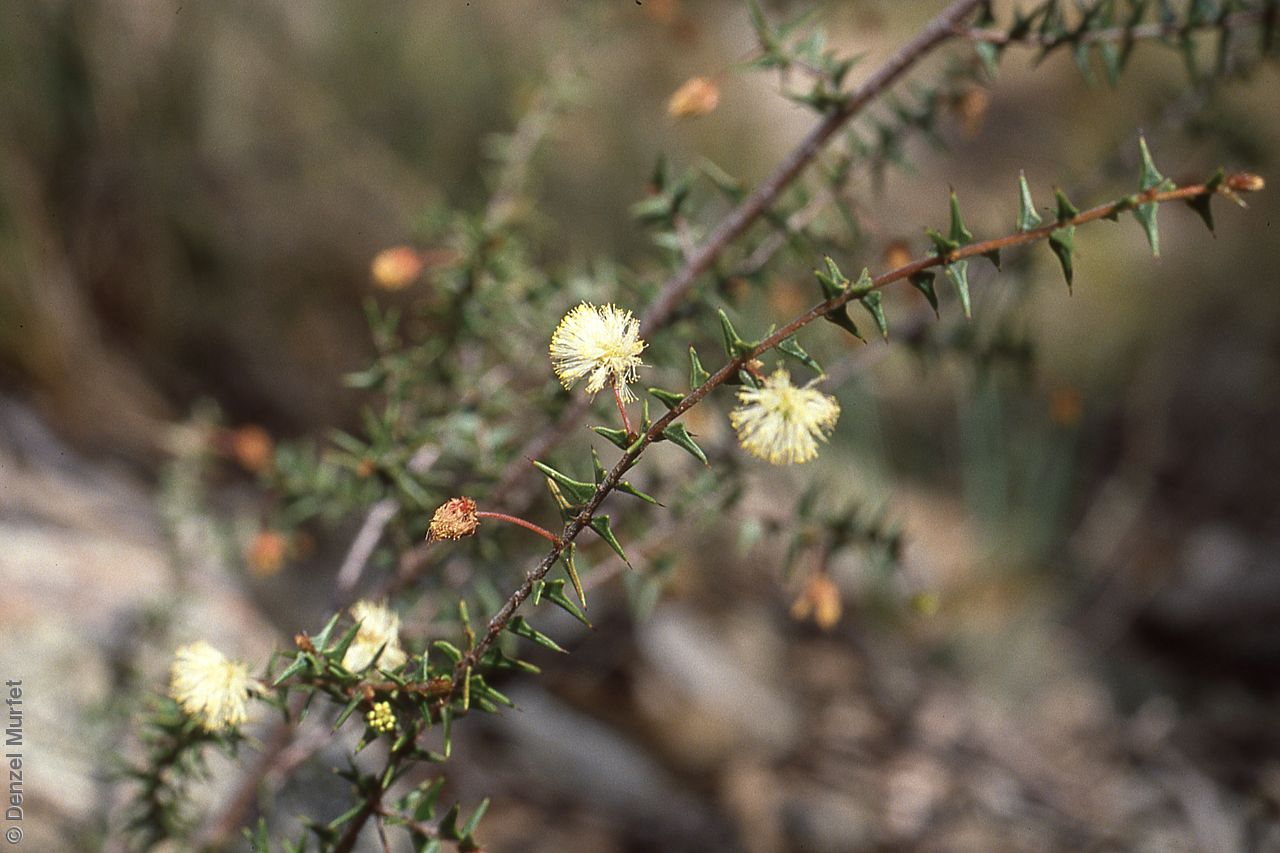
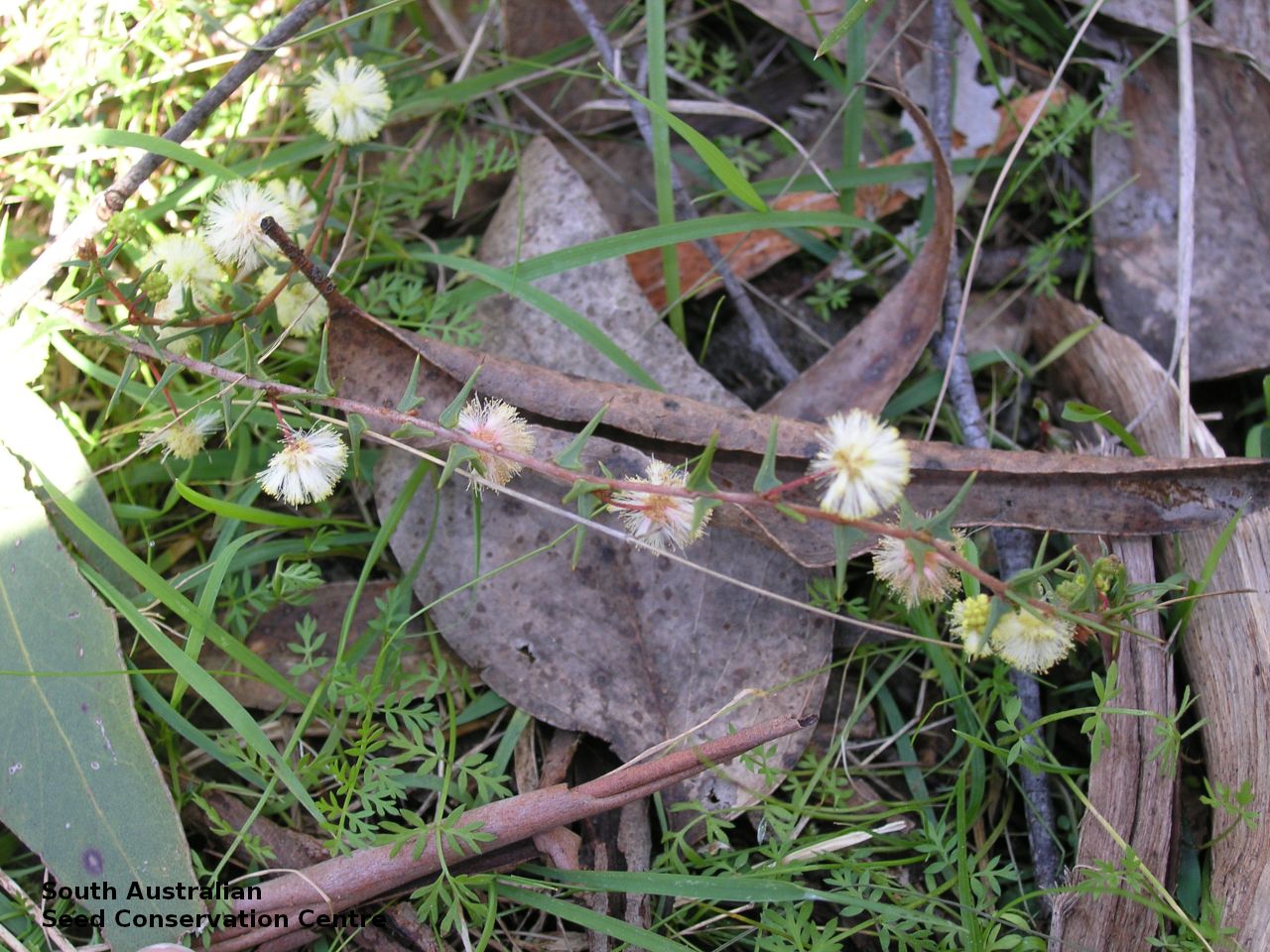
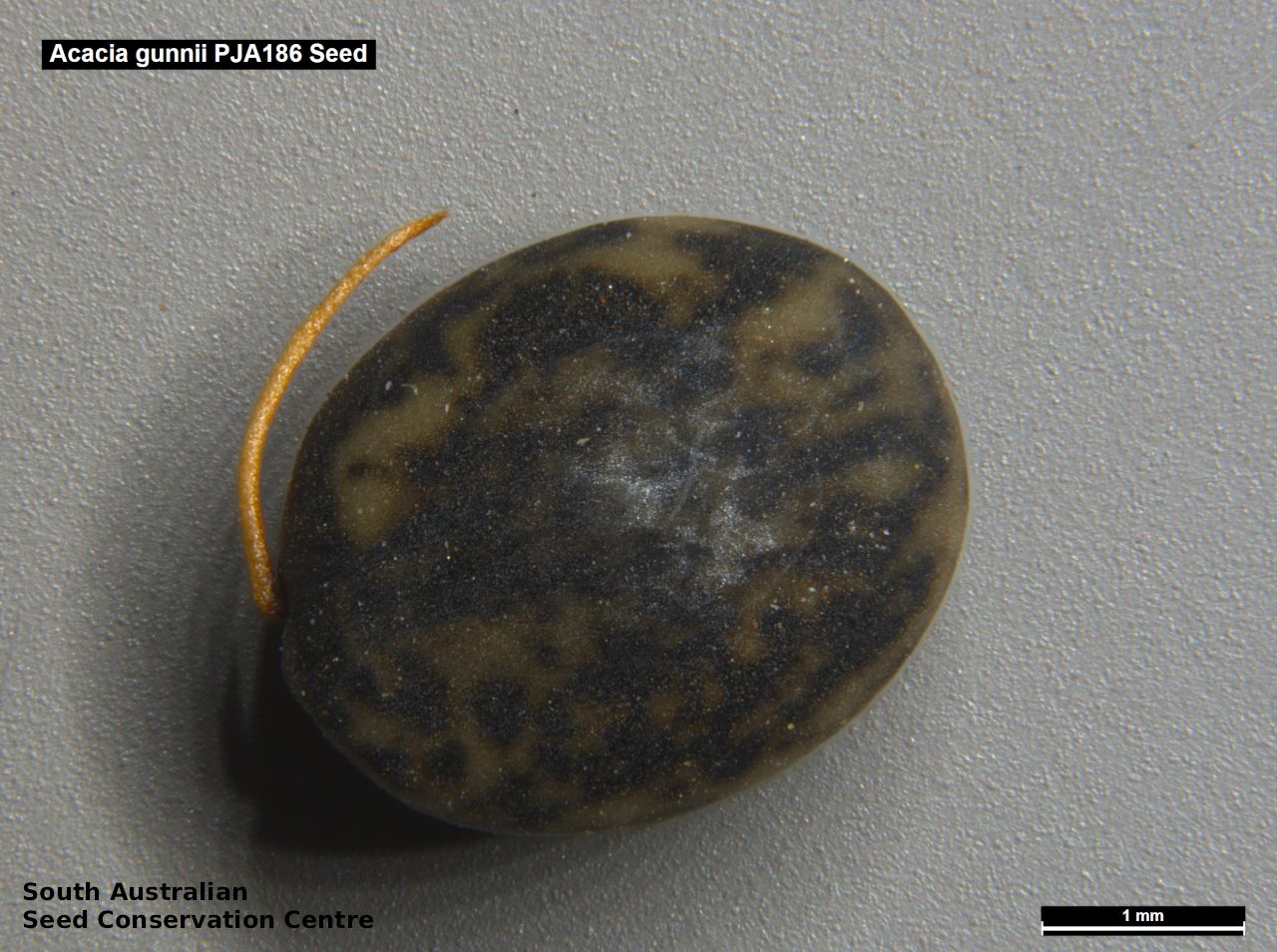
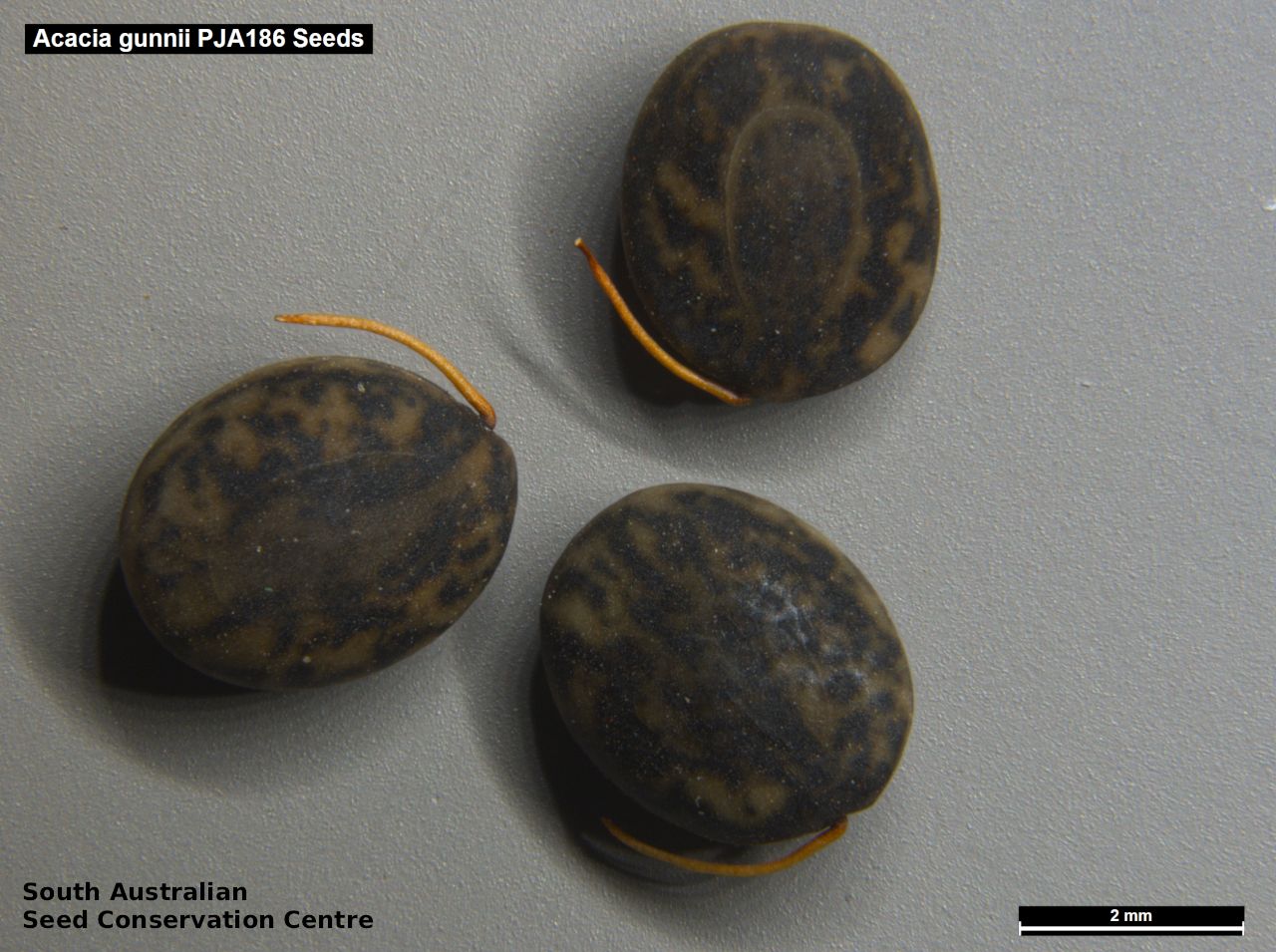
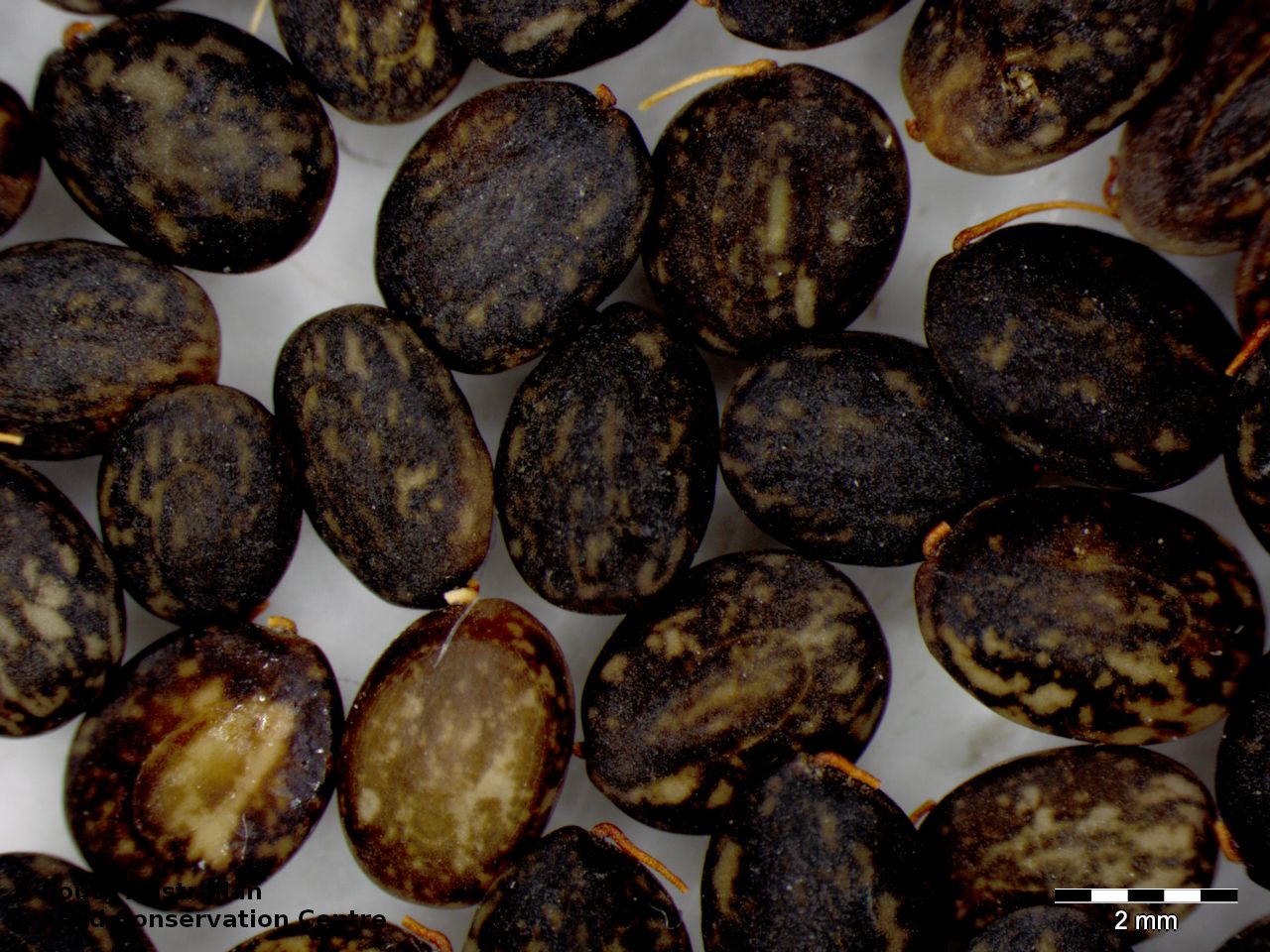
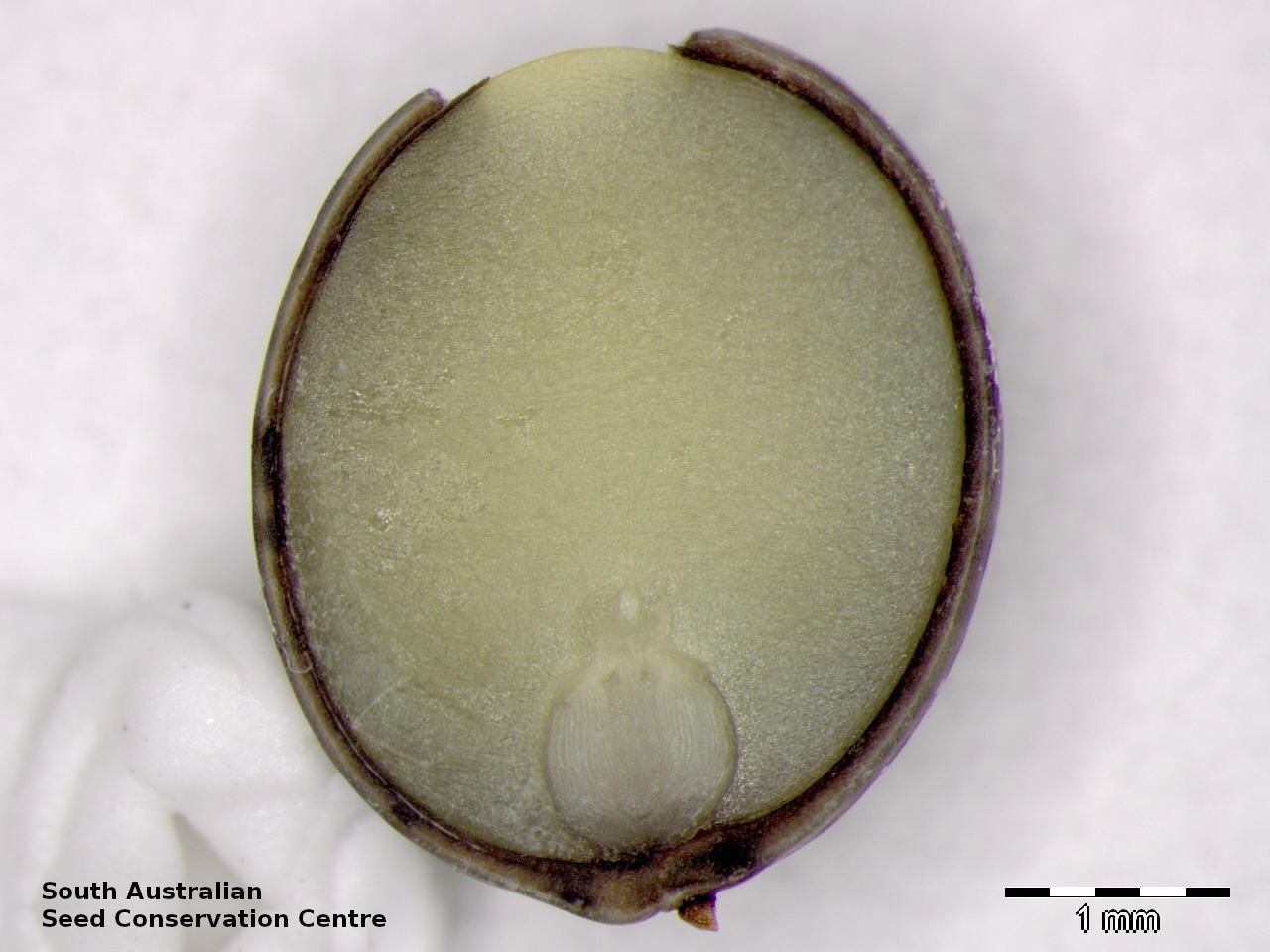
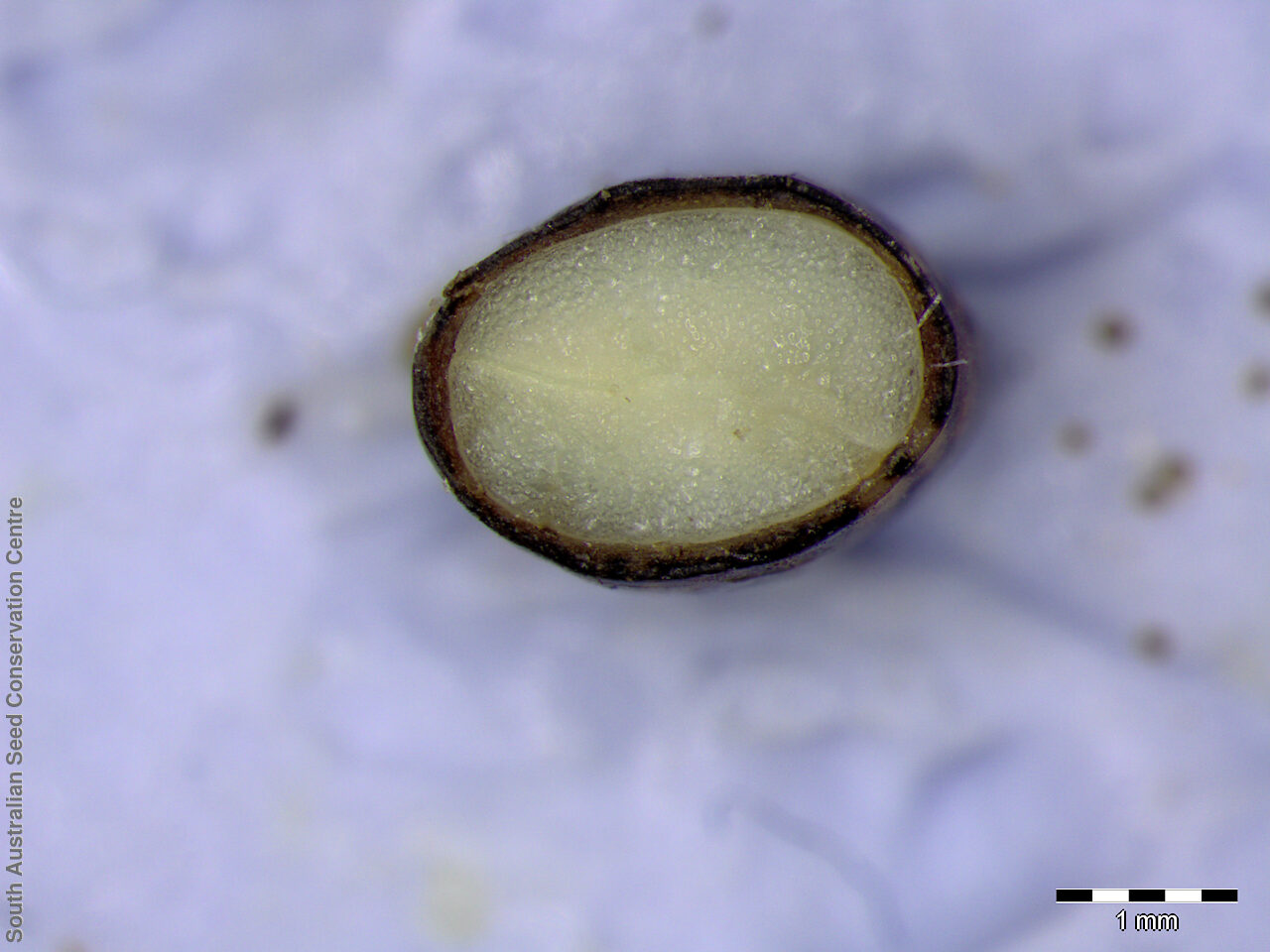

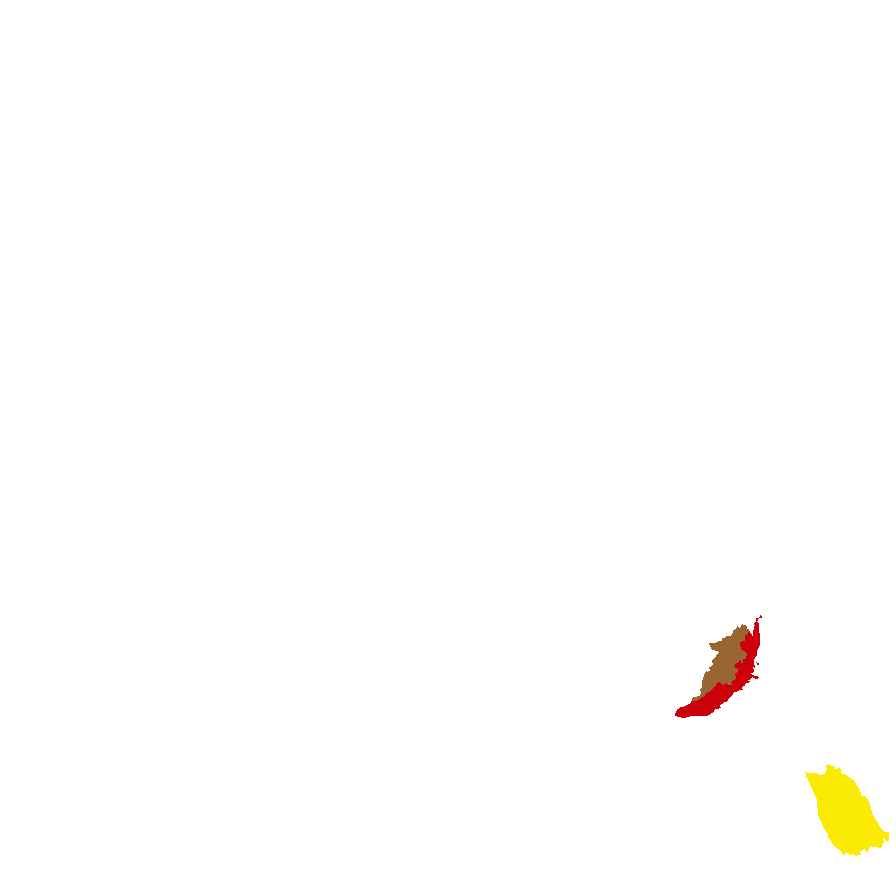
Botanical art
Prior names
Racosperma gunnii
Acacia vomeriformis
Etymology
Acacia from the Greek 'akakia' and derived from 'ake' or 'akis' meaning a sharp point or thorn and 'akazo' meaning to sharpen. Dioscorides, the Greek physician and botanist used the word in the 1st century AD for the Egyptian thorn tree, Acacia arabica. Gunnii named in honour of Ronald Campbell Gunn (1808-1881), a pioneer botanist and scientist in Tasmania.
Distribution and status
Found mainly in the Adelaide Hills area of the Mount Lofty Ranges in South Australia with an isolated population near Padthaway in the South-east. Grows on rocky hillsides and amongst rocky outcrops in open forest, associated with Eucalyptus obliqua and Eucalyptus baxteri on hard, acidic, yellow-duplex soil. Also found in Queensland, New South Wales, Victoria and Tasmania. Native. Rare in South Australia. Rare in Queensland. Common in the other States.
Herbarium regions: Southern Lofty, South Eastern, Green Adelaide
NRM regions: Adelaide and Mount Lofty Ranges, South East
AVH map: SA distribution map (external link)
Plant description
Small, rigid, diffuse, prickly, sprawling or procumbent shrubs to 80 cm high, with terete slender pubescent branchlets. Leaves broadly to narrowly triangular to 13 mm long, rigid with vein prominently raised and situated near the lower straight margin, upper margin humped or sharply angled below the middle, abruptly contracted at the base, tapering towards the apex into a free straight pungent point. Flower-spike simple and axillary, solitary with globular, whitish-yellow flower-heads. Flowering between May and September. Fruits are dark brown linear pod to 3 cm long and 4 mm wide, flat, margins thickened and constricted between the seeds. Seeds are hard, dark brown mottled globular to ovoid seed to 4 mm long and 3 mm wide, with a long string-like aril. Seed embryo type is investing.
Seed collection and propagation
Collect seeds between November and January. Collect mature pods that are turning brown, with hard, dark seeds inside. Be careful when collecting pods, as the plant is very prickly. Place the pods in a tray and leave to dry for 1-2 weeks or until the pods begin to split. Then rub the dried pods to dislodge the seeds. Use a sieve to separate any unwanted material. Store the seeds with a desiccant such as dried silica beads or dry rice, in an air tight container in a cool and dry place. From one collection, the seed viability was average, at 50%. This species has physical dormancy that needs to be overcome for the seed to germinate (e.g. nicking or softening the seed coat).
| Location | No. of seeds (weight grams) | Number of plants | Date collected | Collection number Collection location | Date stored | % Viability | Storage temperature |
|---|---|---|---|---|---|---|---|
| BGA | 2,100 (21.98 g) | 320+ | 5-Dec-2008 | PJA186 Southern Lofty | 1-Jan-2012 | 88% | -18°C |
| BGA | 3,900 (38.46 g) | 1-Jan-2011 | Ivan Clarke Southern Lofty | 1-Jan-2012 | 50% | -18°C |
Number of plants: This is the number of plants from which the seeds were collected.
Collection location: The Herbarium of South Australia's region name.
% Viability: Percentage of filled healthy seeds determined by a cut test or x-ray.